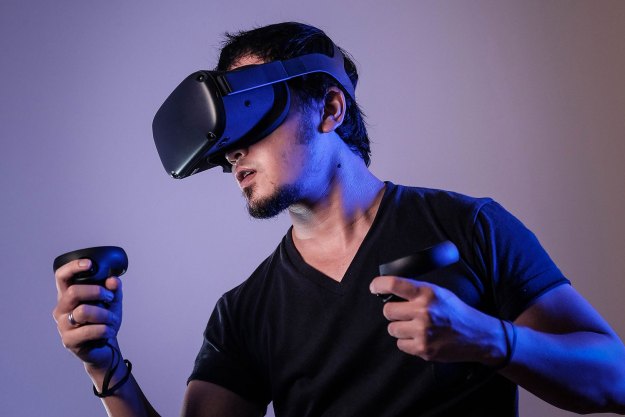The Windows Holographic Shell’s low barrier for entry will likely come as a surprise for VR enthusiasts accustomed to virtual reality’s typically high system requirements, opening up the interface to a variety of home computer setups and hardware configurations.
Revealed earlier this year, the Windows Holographic Shell is an immersive virtual reality interface that allows users to manage all aspects of the Windows 10 operating system using a head-mounted display such as the Oculus Rift or the HTC Vive. In addition to giving users access to basic operating system functionality, the interface supports a variety of Universal Windows Platform apps available via the Windows Store.
Users who take the plunge with Windows Holographic Shell can manage multiple 2D and 3D apps simultaneously using a mixed-reality desktop interface. The platform also supports an optional handheld device that enables 6-degree freedom of movement for greater accuracy and enhanced multitasking.
According to a recent MSPoweruser report, Windows Holographic Shell testers can see whether they measure up to the platform’s minimum suggested requirements during setup. In order to function at a basic level, the Windows Holographic Shell requires a Windows 10 PC with 4GB of RAM, a 4-core CPU, and 1GB of hard disk storage.
Windows Holographic Shell additionally requires a DirectX 12 installation and USB 3.0 ports for VR headset integration. The interface also needs 1.5 -by-2 meters of open space within a user’s physical environment in order to accommodate multiple open windows and applications.
VR enthusiasts will note that the Windows Holographic Shell is surprisingly light in terms of hardware requirements, especially in comparison to the high-end tech needed for other VR interfaces and applications. While the Windows Holographic Shell will continue to run under certain conditions even if its minimum specs aren’t met, users will see a “you may experience issues” warning throughout, and performance will likely suffer as a result.
The Windows Holographic Shell will launch as part of Windows 10’s planned Creators Update in 2017.
Editors' Recommendations
- A new Windows 11 hardware system requirement may be incoming
- This microLED advancement is exactly what AR and VR needs
- Here’s why Apple’s VR headset may become an ‘expensive flop’
- The Windows 11 update rollout has finally ended
- Meta wants its next VR headset to replace your laptop


